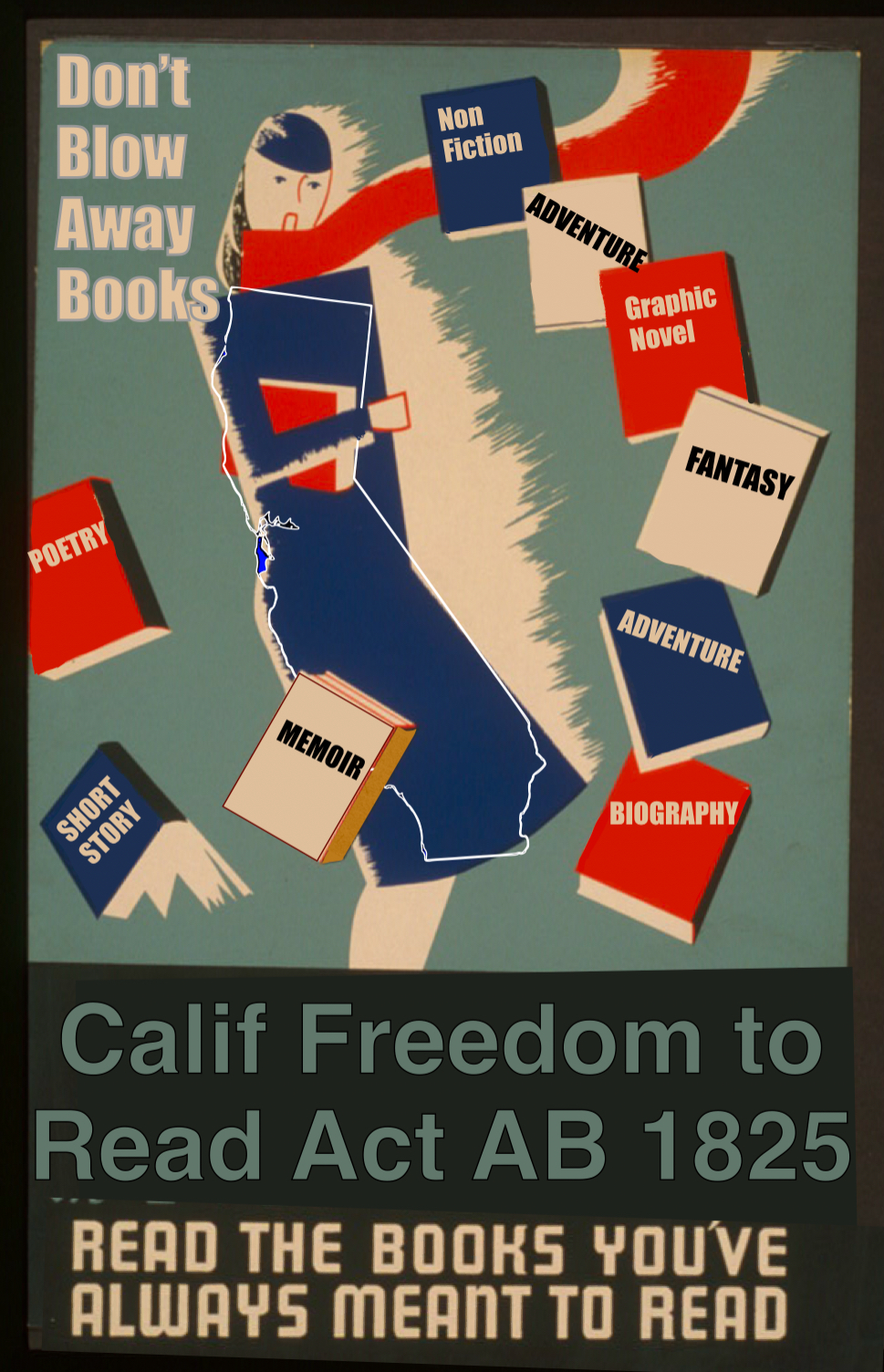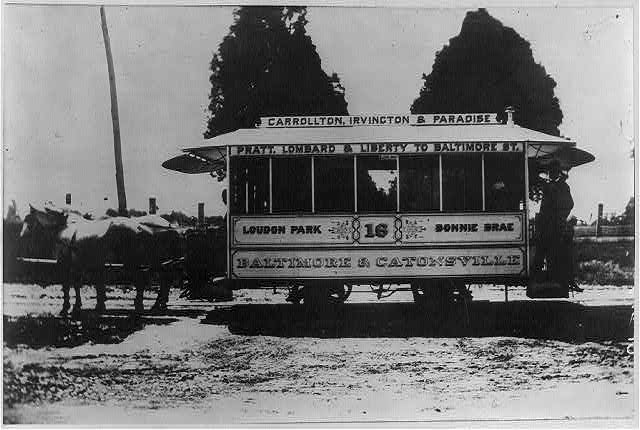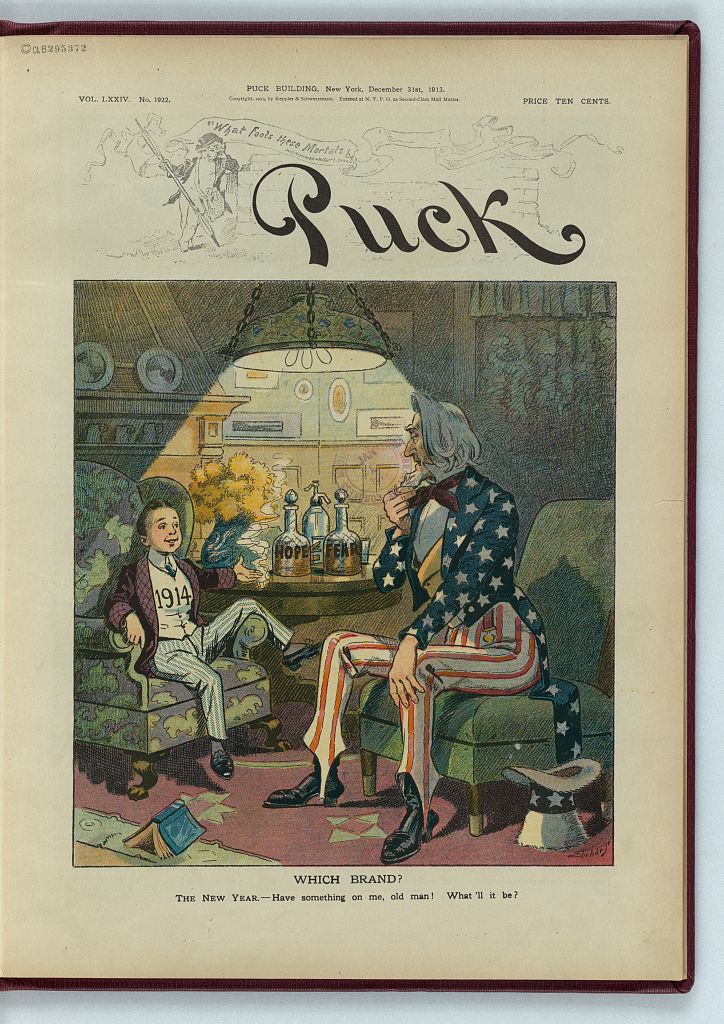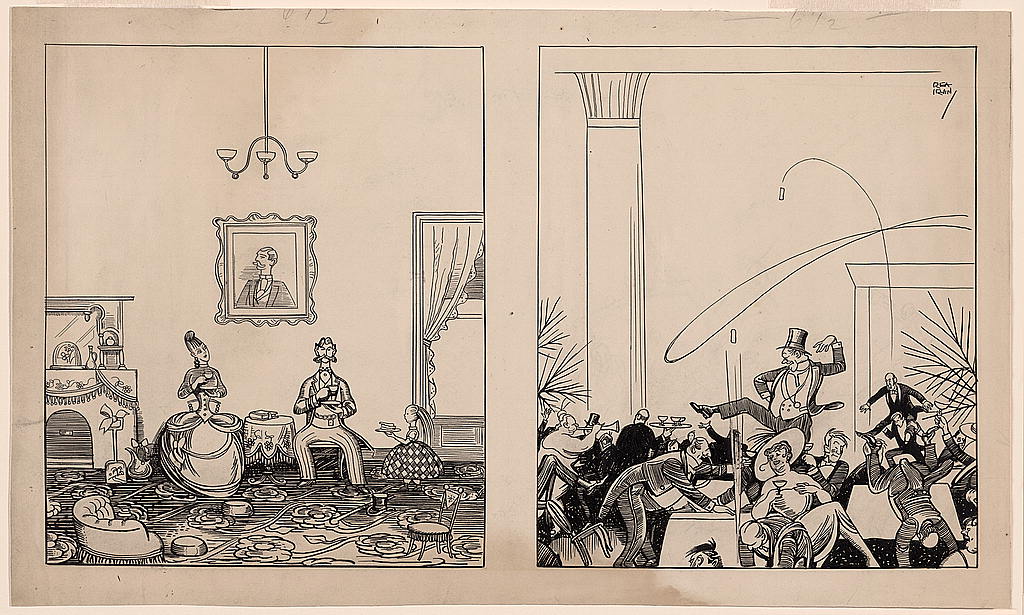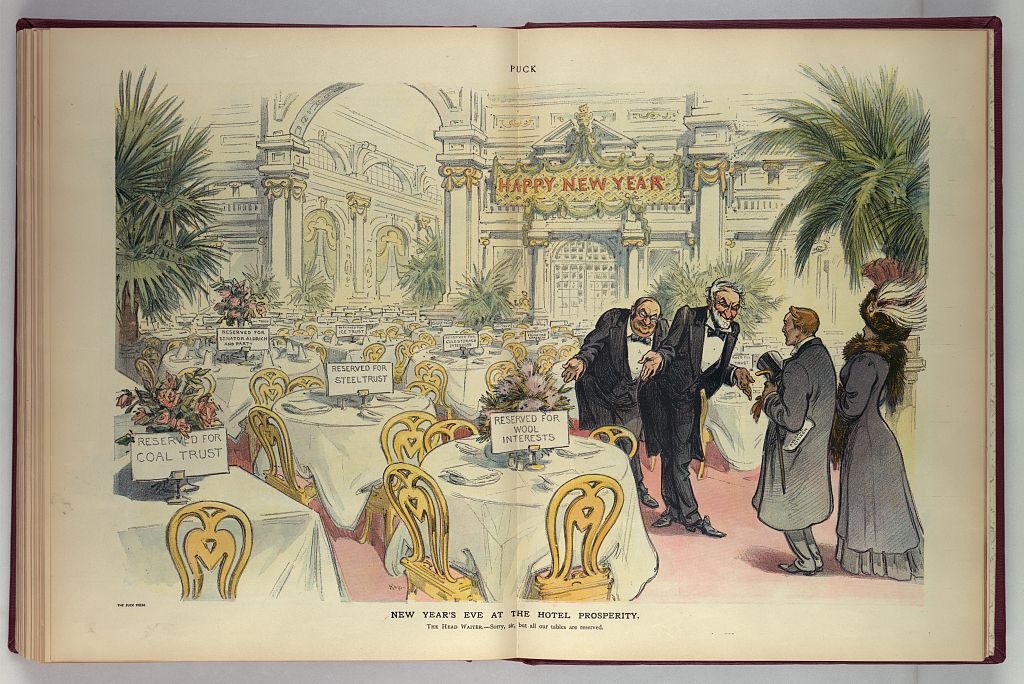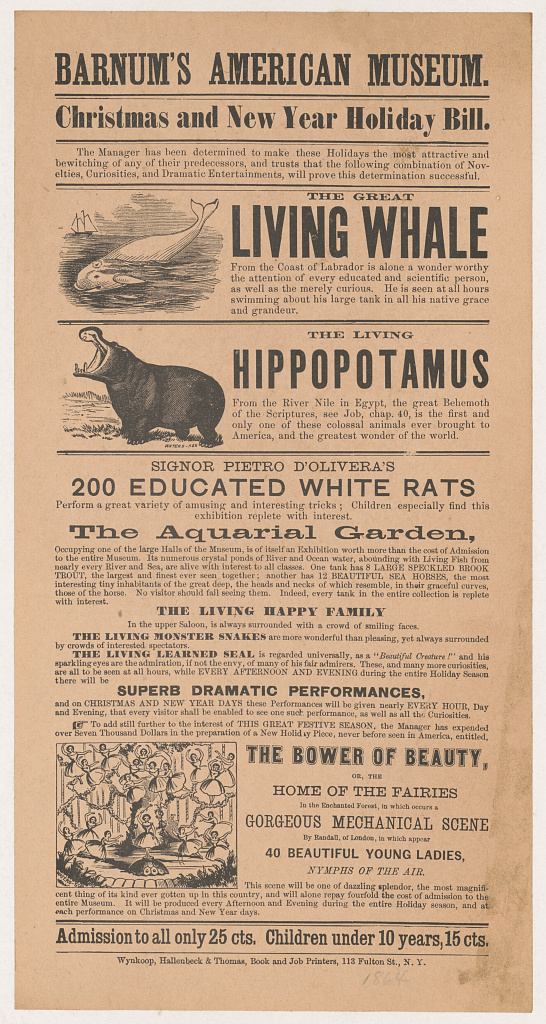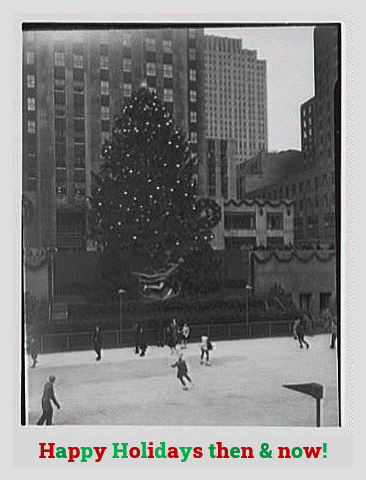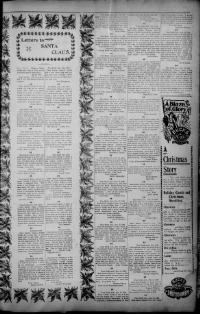This album was created by a member of the TPS Teachers Network, a professional social media network for educators, funded by a grant from the Library of Congress. For more information, visit tpsteachersnetwork.org.
Primary Source Bell Ringers!
Album Description
The TPS Teachers Network Admin Team and Network Mentors wish you all a Happy New Year!
As our gift to Network members, we have built an album of single primary sources, each combined with an easy teaching idea. In short, an album of Primary Source Bell Ringers!
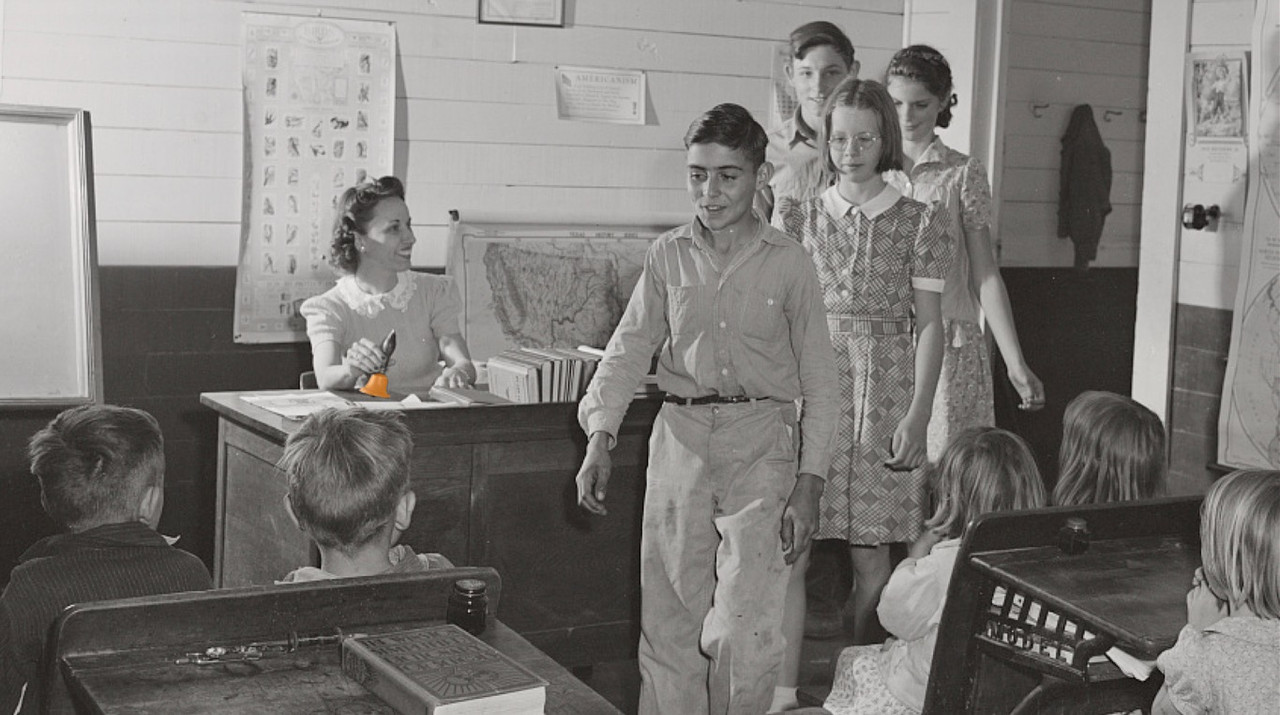
San Augustine, Texas. Rural school children coming into class as the teacher rings the bell, 1943
What is a bell ringer? It's a quick and easy activity that students can complete independently or together as they wait for class to start.
Bell ringers prime kids' brains for learning. You can use bell ringers first thing in the morning, right before or after recess or lunch, between classes and subjects, or even at the end of the day.
Ringaling!
 Pre K - 2
Pre K - 2  3 - 5
3 - 5  6 - 8
6 - 8  9 - 12
9 - 12  13+
13+  Bell Ringer
Bell Ringer  Teaching Strategies
Teaching Strategies
How much snow?
Teaching Notes
Working together or in pairs, write as many questions about this photo as you can in 5 minutes. Ready, set, go!
Circle your three favorite questions.
Think about or discuss why you chose these three questions.
Only now may you peak at the information about the photo!
Pre K - 2 3 - 5 Bell Ringer STEM Measurement Scientific Instruments Weather Snow
Reference link: http://www.loc.gov/item/2016821644/
Reference note
Created / Published
- [between 1909 and 1920]
Genre
- Glass negatives
Notes
- - Title from unverified data provided by the National Photo Company on the negative or negative sleeve.
- - Date from negatives in same range.
- - Gift; Herbert A. French; 1947.
- - General information about the National Photo Company collection is available at http://hdl.loc.gov/loc.pnp/pp.npco
- - This glass negative might show streaks and other blemishes resulting from a natural deterioration in the original coatings.
- - Temp. note: Batch five.
Repository
- Library of Congress Prints and Photographs Division Washington, D.C. 20540 USA http://hdl.loc.gov/loc.pnp/pp.print
Digital Id
- npcc 20071 //hdl.loc.gov/loc.pnp/npcc.20071
A look back - 100 years!
Teaching Notes
Right before the end of the year the country lost its longest living President, Jimmy Carter. In honor of his 100 years of life and his home state of Georgia - here is the front page with The Atlanta Tri-Weekly Journal from the year he was born, 1924.
Potential activities -
- The quickest activity is Think, Puzzle, Explore from Project Zero at Harvard.
- Choose any article and use the protocol to think more deeply about the meaning, connections, questions
- What do you think you know about this topic?
- What questions or puzzles do you have about this topic?
- How might you explore your puzzles about this topic?
- Choose any article and use the protocol to think more deeply about the meaning, connections, questions
- Analyze the cartoon on the front page using Primary Source Analysis Tool
- How does this cartoon fit in with the modern commentary around the US government?
- ELA focus - Read for new words. Identify 5 new words, look up meaning and use them in a modern context.
- Government focus - Read the article "Coolidge Forces After 'Whip Hand' in New Congress"
- Identify similarities and differences to the current challenges in Congress.
- What happens to the potential Coolidge nomination in the 1924 Presidential election?
- What is unique about the 1924 election?
- Geography focus - How many articles are about Georgia, another US state/city, international locations? What does that say about the focus of American journalism? Compare that ratio to today's front page in a paper from a major city near you? What observations do you have?
- Math focus - Using the advertisement for the paper subscription, convert the cost to a modern costs. Resources from the Library of Congress - HERE. Is that a good deal compared to what a subscription to the Atlanta Journal World is today?
Reference link: http://www.loc.gov/resource/sn89053713/1924-01-01/ed-1/?sp=1
Reference note
Created / Published
- Atlanta, Ga., January 1, 1924
Genre
- Newspapers
Notes
- - Triweekly
- - Began with vol. XXII, no. 47 (March 9, 1920).
- - Archived issues are available in digital format from the Library of Congress Chronicling America online collection.
- - Vol. XXII, no. 47 (March 9, 1920) (online surrogate); title from PDF masthead (Georgia Historic Newspapers archive, viewed July 20, 2021).
- - Vol. XXVII, no. 35 (December 30, 1924) (online surrogate) (Georgia Historic Newspapers archive, viewed July 23, 2021).
New Year, New Laws, New Memes
Teaching Notes
Happy New Year! Bell Ring your classes with an meme-making activity based on newly enacted 2025 local laws using inspiration from Library of Congress primary sources. The goal is to make learning about new legislation more interactive
As students enter the classroom, display Library of Congress memes from this search string. For background, reference this blog post from Teaching with The Library Primary Sources & Ideas for Educators Informational Text: Know Your Meme
Hand out or have students research a list of either new school, local or state wide laws that go into effect in 2025 or beyond.
In groups or individually, students select a law and select a Library of Congress primary source to alter or mimic providing a message about the new law. The WPA Poster Collection is a good place to discover ideas. Students can create their “new 2025 law” meme on a slide program or on paper.
Students share and explain the purpose behind their primary source selection and the meme they create.
Original primary source: https://www.loc.gov/item/98507722/
Newly enacted Bill Text AB 1825 California Freedom to Read Act
Reference link: https://www.loc.gov/item/98507722/
Double horse car used in Baltimore in 1885
Teaching Notes
|
Observations What do you see? |
Inferences What do you think? |
This is a Picture Prompt:
Write a paragraph for a story real or imagined.
Reference link: http://www.loc.gov/item/2002698507/
Reference note
Created / Published
- [1885?]
Genre
- Photographic prints--1880-1890
Notes
- - Title and other information transcribed from caption card and item.
- - Frank G. Carpenter Collection (Library of Congress).
- - Caption card tracings: Street RR's; Geogr.
Repository
- Library of Congress Prints and Photographs Division Washington, D.C. 20540 USA
Digital Id
- cph 3b23500 //hdl.loc.gov/loc.pnp/cph.3b23500
Should Uncle Sam Choose Hope or Fear?
Teaching Notes
On December 31, 1913, Puck magazine offered a playful yet profound image of Uncle Sam faced with two drinks from the New Year: ‘Hope’ or ‘Fear.’
Go back in a time machine and tell him some of the events and developments that will come in 1914 and shortly afterwards.
Build an argument for Hope, Fear or a response of your choosing.
Reference link: http://www.loc.gov/item/2011649657/
Reference note
Summary
- Illustration shows a young boy labeled "1914" sitting in a chair, smoking, and offering Uncle Sam, sitting opposite him, a drink; he gestures toward two bottles labeled "Hope" and "Fear".
Created / Published
- N.Y. : Published by Keppler & Schwarzmann, Puck Building, 1913 December 31.
Genre
- Periodical illustrations--1910-1920
- Magazine covers--1910-1920
- Cartoons (Commentary)--1910-1920
- Offset photomechanical prints--Color--1910-1920
Notes
- - Title from item.
- - Caption: The New Year Have something on me, old man! What'll it be?
- - Illus. in: Puck, v. 74, no. 1922 (1913 December 31), cover.
- - Copyright 1913 by Keppler & Schwarzmann.
Repository
- Library of Congress Prints and Photographs Division Washington, D.C. 20540 USA http://hdl.loc.gov/loc.pnp/pp.print
Digital Id
- ppmsca 28011 //hdl.loc.gov/loc.pnp/ppmsca.28011
Abraham Lincoln's pockets on the night of his assassination
Teaching Notes
What I like to do when I am subbing is to have the kids look at a primary source(s) that I hand out to them and they do a "See, Think and Wonder" sheet on that primary source(s).
Some of the questions that I ask the students are " How long ago do you think these items were used"? " How can you tell that these items were used during this time"? and "What context clues give you that information"?
I encourage the kids to have their own ideas about what they think the primary source(s) are. After I get all of the students wonderful and well thought out ideas, then I tell them what the primary source is.
Reference link: http://www.loc.gov/item/2011646850/
Reference note
Created / Published
- 2009.
Genre
- Digital photographs--Color--2000-2010
Notes
- - Title devised by Library staff.
- - Gift; Carol M. Highsmith 2011; (DLC/PP-2002:038)
- - Forms part of the Library of Congress Series in the Carol M. Highsmith Archive.
Repository
- Library of Congress Prints and Photographs Division Washington, D.C. 20540 USA http://hdl.loc.gov/loc.pnp/pp.print
Digital Id
- highsm 11617 //hdl.loc.gov/loc.pnp/highsm.11617
Cartoons in 2025! A Happy New Year 1867 - a Happy New Year 1917
Teaching Notes
- Use the observe, reflect, and question method to analyze both of the images. Think about any similarities or differences between 1867 and 1917. What kind of historic events happened over those fifty years that may have affected/influenced celebrations?
- Draw your own cartoon of what New Year's Eve looks like in 2024.
- If time allows, draw panels showing what New Year's Eve looked like in 1967 and in 2017.
- In each of your drawings, pay attention to the fashions of the time, the activities that people would be doing, and products that you might have seen at those times
- The caption for this image talks about New Year's Eve celebrations starting in the early 1900s. What do you like to do for New Year's Eve? Do you have any traditions?
- The New York City ball-dropping began in 1907. In New Orleans, instead of a ball drop, we have a Fleur de Lis drop. Does your city/town have something similar?
Reference link: http://www.loc.gov/item/2004672688/
Reference note
Summary
- Two-panel cartoon. The 1867 panel shows a proper Victorian family -- father, mother, and little girl -- in their parlor, taking tea. The 1917 panel shows a riotous party in a restaurant with champagne corks popping, a man dancing on the table, two men playing leapfrog, and a heavy lady in a strapless dress drinking champagne. Irwin was a popular contributor of cartoons to Life (the humor magazine) before being named art editor of the New Yorker in 1925.
Created / Published
- 1916 Nov. 17.
Genre
- Cartoons (Commentary)--American--1910-1920
- Drawings--American--1910-1920
Notes
- - Title from Life, (1917 January 4), p. 8-9.
- - Title on verso: A happy New Year 1887. A happy New Year 1917.
- - Caption label from exhibit Cartoon America: In this cartoon for Life magazine, Rea Irvin humorously imagines the difference between New Year's Eve celebrations in the years 1867 and 1917. For 1867, the proper Victorian family sips from their cups of tea in a parlor; while in 1917, a riotous party occurs with champagne corks popping, music, dancing, and general misbehavior. New Year's Eve celebrations did not begin until the early 1900s, with New York City's signature ball-dropping being introduced in 1907. Irvin contributed to such magazines as Life and Cosmopolitan and was the first art editor for the New Yorker.
- - Published in: Life (New York : 1883-1936), January 4, 1917, p. 8-9.
- - Forms part of: Art Wood Collection of Caricature and Cartoon (Library of Congress).
- - Exhibited: Cartoon America: Highlights from the Art Wood Collection of Cartoon and Caricature, Library of Congress, 2006-2007.
- - Unprocessed in WOOD/Irvin.254
- - Sources: Life, Jan. 4, 1917, p. 8-9; World encyclopedia of cartoons, p. 317 ljr
- - Date from verso.
Repository
- Library of Congress Prints and Photographs Division Washington, D.C. 20540 USA
Digital Id
- ppmsca 04666 //hdl.loc.gov/loc.pnp/ppmsca.04666
New Year's eve at the hotel prosperity
Teaching Notes
How we view things can play a crucial role in how we learn about our world. Our learning relies heavily on our viewing skills. Therefore, it is necessary to explicitly teach viewing skills. This bell ringer will ask students to focus just on their critical viewing skills by:
- Recognizing bias
- Recognizing the inferences made in the image
- Distinguishing between fact and opinion
- Evaluating sources
- Understanding power dynamics, privilege, and marginalization
Use the following prompts to analyze this political cartoon:
- What bias is present?
- Why do you think the image is being used?
- Are the visual statements fact or opinion? How do you know?
- Who is the main character? Who is the audience? Who is the creator?
- What power dynamics are present? What is left out of the image?
As an extension, review the Levels of Viewing task card and try another analysis using the discriminative, precise, or appreciative levels of viewing. https://drive.google.com/file/d/17GLawC9KEzw907bERYWqhRF7EkCX1Plq/view?usp=sharing
Adapted from the Levels of Viewing analysis strategy by Dr  Roland Schendel
- MSU Denver school of Education.
Roland Schendel
- MSU Denver school of Education.
Reference link: http://www.loc.gov/resource/ppmsca.27593/
Reference note
Summary
- Illustration shows waiters Joseph G. Cannon and James S. Sherman turning away a man labeled "Average Citizen" and a woman at the "Hotel Prosperity" dining room because all the tables have been reserved; there are signs on the tables that read "Reserved for Wool Interests, Reserved for Coal Trust, Reserved for Steel Trust, Reserved for Senator Aldrich and Party, Reserved for Cold Storage Interests, Reserved for Sugar Trust, Reserved for Ice Trust, [and] Reserved for Franchise Grabbers".
Created / Published
- N.Y. : Published by Keppler & Schwarzmann, Puck Building, 1909 December 29.
Genre
- Periodical illustrations--1900-1910
- Cartoons (Commentary)--1900-1910
- Offset photomechanical prints--Color--1900-1910
Notes
- - Title from item.
- - Caption: The Head Waiter Sorry, sir, but all our tables are reserved.
- - Illus. in: Puck, v. 66, no. 1713 (1909 December 29), centerfold.
- - Copyright 1909 by Keppler & Schwarzmann.
Repository
- Library of Congress Prints and Photographs Division Washington, D.C. 20540 USA http://hdl.loc.gov/loc.pnp/pp.print
Digital Id
- ppmsca 27593 //hdl.loc.gov/loc.pnp/ppmsca.27593
Yes, Virginia, there is a Santa Claus
Teaching Notes
You may have seen the stories from the U.K. about the distress resulting when the vicar in Hampshire told a group of ten- and eleven-year-olds, “You’re all year six, now let’s be real, Santa isn’t real.”
To counter that, this column is an old chestnut, reprinted here one hundred years ago in the Birmingham Age-Herald on December 25, 1924. The author of the response was an editor, Francis Pharcellus Church, who was only acknowledged after his death. His response encapsulates the unseeable but present in our world. This was often reprinted, I am sure not in the least because Christmas tends to be a slow news day.
I remember hearing “Yes, Virginia, there is a Santa Claus” rather frequently growing up, but I was having a conversation with friends recently who did not know about that 1897 New York Sun column that was widely reprinted, or the 1991 TV movie.
The other reason I have for including this is the eye-catching image of the teary child (probably younger than the eight-year-old Virginia, or the children in Hampshire). I tried to reverse search that image, but I didn’t retrieve anything similar. My guess is it because of the local use of flong, which Brittanica describes as a “a thin sheet of pasteboard, pliant enough to register an impression and sufficiently heat-resistant to tolerate the molten type metal,” often for illustration or the inclusion of prepared copy. This year, I learned more about the use of paper flong molds in creating art for newspaper stereotype printing, and my guess would be that this one was perhaps use for advertising initially.
Found Poetry Using the Observe, Reflect, Question Analysis Tool
Teaching Notes
- Using the Primary Source Analysis Tool, read and analyze the primary source(s).
- Use the findings from the primary source analysis tool as fodder for a Found Poem.
- Share your found poetry with your group.

Reference link: http://www.loc.gov/item/2003681696/
Reference note
Summary
- Print shows vignettes of "The Great Living Whale" and "The Living Hippopotamus", and "The Bower of Beauty" as well as announcements of other venues, such as "Signor Pietro D'Olivera's 200 Educated White Rats", "The Aquarial Garden", "The Living Happy Family", "The Living Monster Snakes", "The Living Learned Seal", and "Superb Dramatic Performances". "Admission to all only 25 cts. Children under 10 years, 15 cts."
Created / Published
- [New York] : Wynkoop, Hallenbeck & Thomas, Book and Job Printers, 113 Fulton St. N.Y., [1864]
Genre
- Advertisements--1860-1870
- Periodical illustrations--1860-1870
- Wood engravings--1860-1870
Notes
- - Title from item.
- - Inscribed in pencil on lower right: 1864.
- - Gift; Paul Caldwell; Aug. 6, 1964.
- - Forms part of: Popular graphic art print filing series (Library of Congress).
Repository
- Library of Congress Prints and Photographs Division Washington, D.C. 20540 USA http://hdl.loc.gov/loc.pnp/pp.print
Digital Id
- pga 13460 //hdl.loc.gov/loc.pnp/pga.13460
Reading Poetry
Teaching Notes
 Rebecca Newland
, past Teacher in Residence at the Library of Congress, wrote this post with bell ringer ideas for reading poetry as part of the “Teacher’s Corner” series hosted on the former From the Catbird Seat blog.
Rebecca Newland
, past Teacher in Residence at the Library of Congress, wrote this post with bell ringer ideas for reading poetry as part of the “Teacher’s Corner” series hosted on the former From the Catbird Seat blog.
The link to image source record can be found under the Reference note.
Reference note
Jakuren Hōshi
https://www.loc.gov/item/2008660869/
Summary
- Print shows two figures, possibly the two lovers from the poem "Loving two people equally" based on the legend of Unai Otome; one lying on the floor reading (poetry?) is wearing a kimono with oragami cranes depicted on it, the other is standing, smoking a pipe.
Created / Published
- [176-, printed later]
Genre
- Ukiyo-e--Japanese--Color--1760-1770
- Woodcuts--Japanese--Color--1760-1770--Reproductions--1890-1940
Notes
- - Title and other descriptive information compiled by Nichibunken-sponsored Edo print specialists in 2005-06.
- - Modern reproduction.
- - Forms part of: Japanese prints and drawings (Library of Congress).
Repository
- Library of Congress Prints and Photographs Division Washington, D.C. 20540 USA http://hdl.loc.gov/loc.pnp/pp.print
Digital Id
- jpd 02304 //hdl.loc.gov/loc.pnp/jpd.02304
Writing Poetry
Teaching Notes
 Rebecca Newland
, past Teacher in Residence at the Library of Congress, wrote this post with bell ringer ideas for writing poetry as part of the “Teacher’s Corner” series hosted on the former From the Catbird Seat blog.
Rebecca Newland
, past Teacher in Residence at the Library of Congress, wrote this post with bell ringer ideas for writing poetry as part of the “Teacher’s Corner” series hosted on the former From the Catbird Seat blog.
The image link can be found under the Reference note.
Reference note
Poetry
https://www.loc.gov/item/2003680011/
Created / Published
- [no date recorded on shelflist card]
Notes
- - This record contains unverified data from PGA shelflist card.
- - Associated name on shelflist card: Bartolozzi, F.
Repository
- Library of Congress Prints and Photographs Division Washington, D.C. 20540 USA
Digital Id
- pga 04334 //hdl.loc.gov/loc.pnp/pga.04334
What is the TRUTH?
Teaching Notes
Before reading the attached text, answer the following questions:
- Based on your own knowledge/beliefs, briefly explain why Rosa Parks refused to give up her seat to a white passenger, leading to the Montgomery Bus Boycott.
- Based on what you have been taught, before taking this class, why did Rosa Parks refuse to give up her seat.
Assignment Task:
- Read the attached primary source document and compare and contrast your responses to questions 1 and 2, to the explanation in the primary source document.
- Briefly state why relying on primary sources are important when studying history.
Reference link: https://www.loc.gov/exhibitions/rosa-parks-in-her-own-words/about-this-exhibition/the-bus-boycott/incarceration-at-montgomery-city-jail/
Reference note
This reference is from a collection of letters written by Rosa Park herself that provides a much clearer, and accurate, portrayal of the events of that day. 6 - 8 3 - 5 6 - 8 9 - 12 13+ English/Language Arts Library Social Studies/History
Happy New Year!
Teaching Notes
Have students change the text to suit the current new year.
Alternatively, have students find the front-page of a newspaper from the day they were born and change the text based on the content of the page.
Reference link: http://www.loc.gov/item/2011648852/
Reference note
Summary
- Illustration shows Father Time ringing bells proclaiming "The Greatest Good for the Greatest Number", while a crowd in the street celebrates the New Year by using noisemakers, horns, drums, and cymbols to sound their personal causes, such as "Partisanship" and "Partisan Politics", "Ring Politics", "Spoils System", "Women's Rights", and "Calamity Howling".
Created / Published
- N.Y. : Published by Keppler & Schwarzmann, Puck Building, 1910 December 28.
Genre
- Periodical illustrations--1910
- Cartoons (Commentary)--1910
- Offset photomechanical prints--Color--1910
Notes
- - Title from item.
- - Caption: Time, the Bell-Ringer Some year, perhaps, they'll stop their noise long enough to hear the chimes.
- - Illus. in: Puck, v. 68, no. 1765 (1910 December 28), centerfold.
- - Copyright 1910 by Keppler & Schwarzmann.
Repository
- Library of Congress Prints and Photographs Division Washington, D.C. 20540 USA http://hdl.loc.gov/loc.pnp/pp.print
Digital Id
- ppmsca 27697 //hdl.loc.gov/loc.pnp/ppmsca.27697
Weird Lights Cover Santa Fe!
Teaching Notes
What are the weird lights on top of the trading post?
In New Mexico's Hispano culture, they are known from Santa Fe north as farolitos (fah roh lee to) and from Albuquerque south as luminarias (loo men ah ree ah). https://www.newmexico.org/holidays/luminaria-vs-farolito/
In Northern New Mexico, a luminaria is a small bonfire. This is a reference that dates back to December 3, 1590, when one of the Spanish colonizers made reference to them as a way to light routes. Once flat bottomed paper bags became available, then these were used outdoors. According to legend, Mary and Joseph follow the farolitos/luminarias to the barn on Christmas Eve.
Today, they are ubiquitous holiday decorations on buildings and pathways throughout the southwest.
Teaching Strategy:
- Read one of the books with your students. Carlos, Light the Farolito (Grades K-2) by Jean Ciavonne and The Farolitos of Christmas (Grades 3-5) by Rudolfo Anaya are wonderful books to introduce your students to this Hisapnic tradition.
- Have them color New Mexico on a map and research one fun fact about the State.
- Decorate farolitos with your students and place them along the walkway into the school for the winter choir program.
- flat bottom paper lunch bags (brown or white work best)
- markers (designs like stars are popular) or scissors (older kids can cut designs on the bags)
- battery operated tea lights
- sand
Pre K - 2 3 - 5 6 - 8 9 - 12 Social Studies/History Hispanic History Art/Music bell ringer
Reference link: http://www.loc.gov/item/2020742423/
Reference note
Created / Published
- 2018-12-04.
Genre
- Digital photographs--Color--2010-2020
Notes
- - Title, date, keywords, and additional description details based on information provided by the photographer.
- - The surface-edge illuminated lights are "luminaria," small lanterns of real or facsimile bags holding torches, candles, or small lightbulbs. They are a traditional year-end holiday decoration in New Mexico, especially on Christmas Eve.
- - Purchase; Carol M. Highsmith Photography, Inc.; 2020; (DLC/PP-2020:133).
- - Forms part of Carol M. Highsmith's America Project in the Carol M. Highsmith Archive.
Repository
- Library of Congress Prints and Photographs Division Washington, D.C. 20540 USA https://hdl.loc.gov/loc.pnp/pp.print
Digital Id
- highsm 65943 https://hdl.loc.gov/loc.pnp/highsm.65943
Rockefeller Center Christmas Tree: A Cherished Tradition
Teaching Notes
- Working with a partner, please jot down what you observe in the photograph and what questions come to mind.
- Next take a look at background information about the photograph and note two supplemental fascinating facts related to the photograph.
- Our class will now come together to share observations, questions and fascinating facts.
- Students are encouraged to reflect on what traditions in your own community bring people together during the holiday season.
- Wishing everyone a happy & healthy New Year 2025!
Bell Ringer 6 - 8 9 - 12 13+ Rockefeller Center Christmas Holidays Christmas Trees Winter Skating Rinks
Reference link: https://www.loc.gov/pictures/item/2018722657/
Reference note
Title: Rockefeller Center. Christmas tree and skaters, from center
Creator(s): Gottscho-Schleisner, Inc., photographer
Date Created/Published: 1943 Dec. 9.
Medium: 1 negative : safety ; 4x5 in.
Reproduction Number: LC-G613-T-44512 (interpositive)
Rights Advisory: No known restrictions on publication. For information, see: "Gottscho-Schleisner Collection" (https://hdl.loc.gov/loc.pnp/res.104.gott)
Call Number: LC-G613- 44512 [P&P]
Repository: Library of Congress Prints and Photographs Division Washington, D.C. 20540 USA
Notes:
• Title and date from original negative sleeves or photographer's registers.
• Credit line: Gottscho-Schleisner Collection, Library of Congress, Prints and Photographs Division.
• General information about the Gottscho-Schleisner Collection is available at: https://hdl.loc.gov/loc.pnp/pp.gsc
• Forms part of: Gottscho-Schleisner Collection (Library of Congress)
• Temp. note: Batch one.
Subjects:
• Decorations.
• United States--New York (State)--New York.
Format:
• Acetate negatives.
Collections:
• Gottscho-Schleisner Collection
Part of: Gottscho-Schleisner Collection (Library of Congress)
Bookmark This Record:
https://www.loc.gov/pictures/item/2018722657/
Remember the poor : a Salvation Army Christmas box
Teaching Notes
A literal interpretation of the album title! (and a potential incidental classroom discussion.)
I always associate bell ringers with those who ring the bells while tending the Salvation Army donation buckets during the Holiday Season. Recently I noticed teenagers in this role at a grocery store; maybe they were fulfilling a community service project.
Questions:
- What is the basic history of the salvation army?
- How does the Salvation army provide assistance to those in need following natural disasters?
- How and why was the Salvation army been important in times of war?
- What, if any, is the connection between the Salvation Army and the Musical Guys and Dolls?
- How has the Salvation Army provided assistance recent years such as the COVID pandemic? An example to get you started: Volunteer food distributors at Salvation Army. East Chicago, Indiana, June 8, 2020
Retired teachers can be bell ringers, too! I visited with this friendly group on a return visit to the same store.
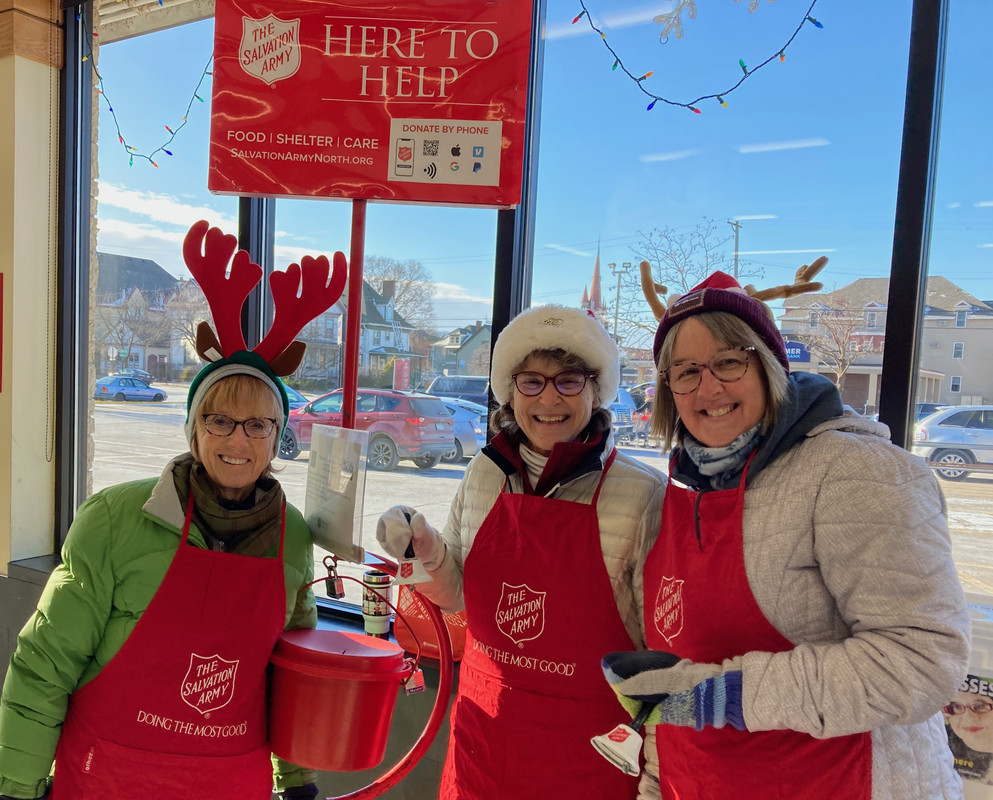
Reference link: http://www.loc.gov/resource/det.4a05617/
Dear Santa, Bring Me a… History Lesson!
Teaching Notes
1. “What can these requests tell us about the lives of children in 1898?”
2. “Compare these with what children today might ask for. What does this say about how society and technology have changed?”
Encourage students to identify any historical or social trends (e.g., toys reflecting gender roles, socioeconomic status, or the influence of industrialization).
Reference link: https://www.loc.gov/resource/sn89051168/1898-12-18/ed-1/?sp=7
Reference note
Newspaper: Pine Bluff daily graphic. (Pine Bluff, Ark.) 1893-1942
Newspaper Link: https://www.loc.gov/item/sn89051168/1898-12-18/ed-1/
Image provided by: Arkansas State Archives
PDF Link: https://chroniclingamerica.loc.gov/lccn/sn89051168/1898-12-18/ed-1/seq-7.pdf
Tragic Prelude
Teaching Notes
Teaching Notes:
1) With a partner, make a list of everything you see in the mural.
2) Trade your list with another group's list. Next to each item on the list, write what you think each thing might symbolize or mean.
3) Trade back so that each group has their original list. Discuss the notations made by the other group and add any additional ideas.
4) Share your analysis in a brief class discussion.
Reference link: https://www.loc.gov/resource/highsm.67050/



